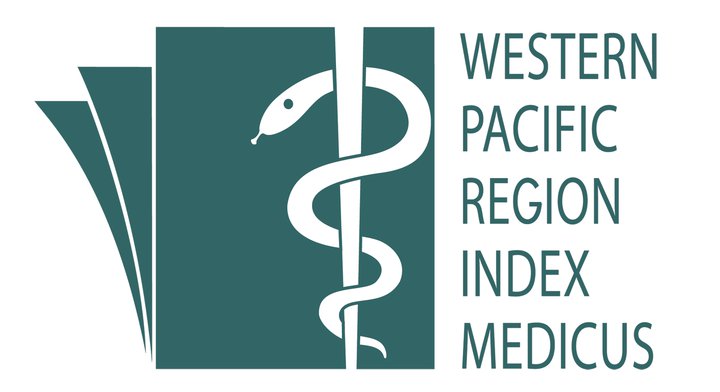Promoting Malaysians to Spend on Health: What It Takes to Encourage Malaysians to Spend on Health Promotion?
Keywords:
Demography - disease - health promotion - lifestyle - prevention.Abstract
Introduction
In light of the important role of health-promoting expenditure in health, the objective of this study was to investigate the socio-demographic determinants of health-promoting expenditure such as purchase of medical equipment and services, food supplements and health education services and products among Malaysian adults.
Methods
Third National Health and Morbidity Survey (NHMS III) consisting of 28771 observations was used for analysis. It was the latest nationally representative cross-sectional population-based survey conducted by the Ministry of Health Malaysia from April 2006 to January 2007. A censored regression model (Tobit) was applied to examine the factors affecting health-promoting expenditure.
Results
The results showed that age, income, gender, ethnicity, education, marital status, employment status and location of residence were able to affect health-promoting expenditure. In particular, individuals who were younger, poor, males, Indian/others, less educated, unmarried, unemployed and residing in rural areas tended to spend less money on health promotion compared to others.
Conclusions
This study reached a conclusion that socio-demographic factors were significantly associated with individual’s preferences for health promotion. Therefore, the government should devote its attention to these factors when formulating nationwide health policies.
Â
References
World Health Organization. Fact sheet: Noncommunicable diseases. [cited 2012 June 15]. Available at: http://www.who.int/mediacentre/factsheets/fs355/en/index.html.
Institute for Public Health. The Third National Health and Morbidity Survey (NHMS III) 2006, hypertension and hypercholesterolemia. Putrajaya: Ministry of Health Malaysia; 2008.
Edwards A, Lim WW. Liow: Time to provide incentives for staying healthy. The Star. 2012 July 16.
Lee YP, Loh FF. Diabetes among children on the rise. The Star. 2010 July 24.
Rimm EB, Willet WC, Hu FB, et al. Folate and vitamin B6 from diet and supplements in relation to risk of coronary heart disease among women. JAMA.1998; 279:359-364.
Giovannucci E, Stampfer MJ, Colditz GA, et al. Multivitamin use, folate, and colon cancer in women in the nurses’ health study. Ann Intern Med.1998; 129:517-524.
Strong K, Mathers C, Leeder S, Beaglehole R. Preventing chronic diseases: How many lives can we save? Lancet.2005; 366:1578-1582.
Unwin N, Alberti KGMM. Chronic non-communicable diseases. Ann Trop Med Parasit.2006; 100:455-464.
Duffy ME. Determinants of health-promoting lifestyles in older persons. J Nurs Scholarship.1993; 25:23-28.
Fleming S, Kelleher C, O’connor M. Eating patterns and factors influencing likely change in the workplace in Ireland. Health Promot Int.1997; 12:187-196.
Johansson L, Thelle DS, Solvoll K, Bjorneboe GEA, Drevon CA. Healthy dietary habits in relation to social determinants and lifestyle factors. Brit J Nutr.1999; 81:211-220.
Pullen C, Walker SN, Fiandt K. Determinants of health-promoting lifestyle behaviors in rural older women. Fam Community Health.2001; 24:49-72.
Al-Kandari F, Vidal VL, Thomas D. Health-promoting lifestyle and body mass index among college of nursing students in Kuwait: A correlational study. Nurs Health Sci.2008; 10:43-50.
Paulik E, Boka F, Kertesz A, Balogh S, Nagymajtenyi L. Determinants of health-promoting lifestyle behaviour in the rural areas of Hungary. Health Promot Int.2010; 25: 277-288.
Institute for Public Health. The Third National Health and Morbidity Survey (NHMS III) 2006, chapter on health expenditure. Putrajaya: Ministry of Health Malaysia; 2008.
Riediger ND, Moghadasian MH. Patterns of fruit and vegetable consumption and the influence of sex, age and socio-demographic factors among Canadian elderly. J Am Coll Nutr.2008; 27:306-313.
Whiting SJ, Vatanparast H, Taylor JG, Adolphe JL. Barriers to healthful eating and supplement use in lower-income adults. Can J Diet Pract Res.2010; 71: 70-76.
Tobin J. Estimation of relationships for limited dependent variables. Econometrica.1958; 26:24–36.
Studenmund AH. Using econometrics: A practical guide (5th ed.). New York: Pearson; 2006.
Grossman M. On the concept of health capital and the demand for health. J Polit Economy.1972; 80: 223-255.
Robroek SJW, van Lenthe FJ, van Empelen P, Burdorf A. Determinants of participation in worksite health promotion programmes: A systematic review. Int J Behav Nutr Phys Activ.2009; 6.
Ricciuto L, Tarasuk V, Yatchew A. Socio-demographic influences on food purchasing among Canadian household. Eur J Clin Nutr.2006; 60:778-790.
Wandel M. Dietary intake of fruits and vegetables in Norway: Influence of life phase and socio-economic factors. Int J Food Sci Nutr.1995; 46: 291-301.
Kenkel D. The demand for preventive medical care. Appl Econ.1994; 26: 313-325.
Kato I, Nomura AM, Stemmermann GN, Chyou PH. Vitamin supplement use and its correlated among elderly Japanese men residing on Oahu, HI. Public Health Rep.1992; 107: 712-717.
Cheah YK. Determinants of the Demand for Using Preventive Medical Care among Adults in Penang, Malaysia. Mal J Med Sci.2013; 20: 46-55.
Fogelholm M, Valve R, Absetz P, et al. Rural-urban differences in health and health behavior: A baseline description of a community health-promotion programme for the elderly. Scand J Public Health.2006; 34: 632-640.
Downloads
Additional Files
Published
How to Cite
Issue
Section
License
IJPHR applies the Creative Commons Attribution (CC BY) license to articles and other works we publish. If you submit your paper for publication by IJPHR, you agree to have the CC BY license applied to your work. Under this Open Access license, you as the author agree that anyone can reuse your article in whole or part for any purpose, for free, even for commercial purposes. Anyone may copy, distribute, or reuse the content as long as the author and original source are properly cited. This facilitates freedom in re-use and also ensures that IJPHR content can be mined without barriers for the needs of research.






